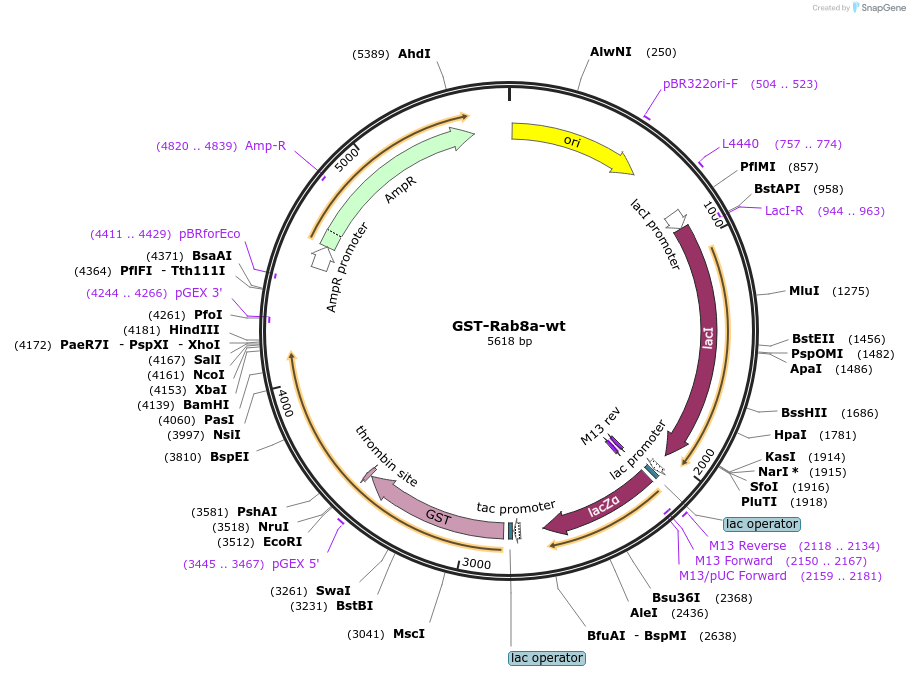GST-Rab8a-wt
(Plasmid
#86078)
-
PurposeA bacterial expression plasmid encoding Rab8a wild type with N-terminus GST.
-
Depositing Lab
-
Sequence Information
Ordering
| Item | Catalog # | Description | Quantity | Price (USD) | |
|---|---|---|---|---|---|
| Plasmid | 86078 | Standard format: Plasmid sent in bacteria as agar stab | 1 | $85 | |
Backbone
-
Vector backbonepGEB
-
Backbone manufacturerLu Lei (J Cell Sci. 2001)
- Backbone size w/o insert (bp) 5000
- Total vector size (bp) 5617
-
Vector typeBacterial Expression
Growth in Bacteria
-
Bacterial Resistance(s)Ampicillin, 100 μg/mL
-
Growth Temperature37°C
-
Growth Strain(s)DH5alpha
-
Copy numberLow Copy
Gene/Insert
-
Gene/Insert namehRab8A
-
Alt nameras-related protein Rab-8A
-
SpeciesH. sapiens (human)
-
GenBank IDNM_005370.4
-
Entrez GeneRAB8A (a.k.a. MEL, RAB8)
- Promoter tac
-
Tag
/ Fusion Protein
- GST (N terminal on insert)
Cloning Information
- Cloning method Restriction Enzyme
- 5′ cloning site EcoRI (not destroyed)
- 3′ cloning site BamHI (not destroyed)
- 5′ sequencing primer 5' GGCAAGCCACGTTTGGTG 3'
- 3′ sequencing primer 5' GGAGCTGCATGTGTCAGAGG 3' (Common Sequencing Primers)
Resource Information
-
A portion of this plasmid was derived from a plasmid made byThe original Rab8a clone was from Mammalian Gene Collection (IMAGE:3547214)
Terms and Licenses
-
Academic/Nonprofit Terms
-
Industry Terms
- Not Available to Industry
Trademarks:
- Zeocin® is an InvivoGen trademark.
These plasmids were created by your colleagues. Please acknowledge the Principal Investigator, cite the article in which the plasmids were described, and include Addgene in the Materials and Methods of your future publications.
-
For your Materials & Methods section:
GST-Rab8a-wt was a gift from Lei Lu (Addgene plasmid # 86078 ; http://n2t.net/addgene:86078 ; RRID:Addgene_86078) -
For your References section:
A ternary complex comprising transportin1, Rab8 and the ciliary targeting signal directs proteins to ciliary membranes. Madugula V, Lu L. J Cell Sci. 2016 Oct 15;129(20):3922-3934. Epub 2016 Sep 15. 10.1242/jcs.194019 PubMed 27633000





